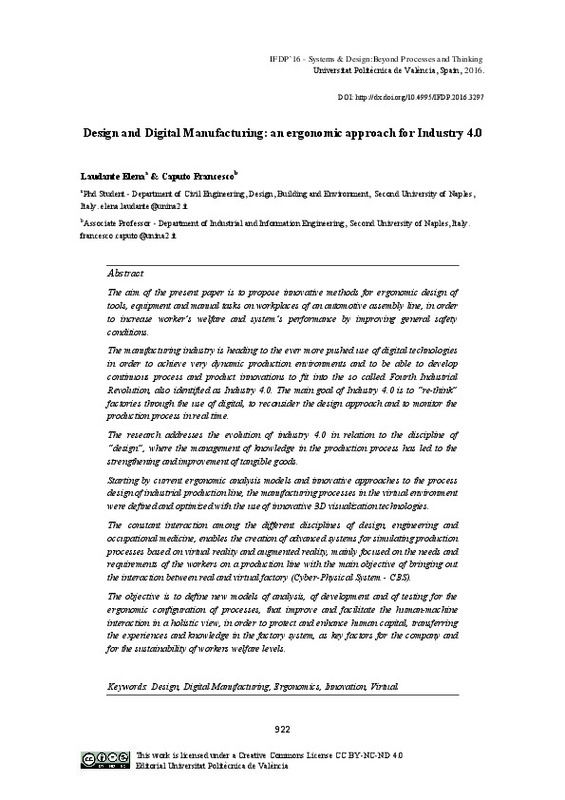JavaScript is disabled for your browser. Some features of this site may not work without it.
Buscar en RiuNet
Listar
Mi cuenta
Estadísticas
Ayuda RiuNet
Admin. UPV
Design and Digital Manufacturing: an ergonomic approach for Industry 4.0
Mostrar el registro completo del ítem
Laudante, E.; Caputo, F. (2016). Design and Digital Manufacturing: an ergonomic approach for Industry 4.0. En Systems&design:beyond processes and thinking. Editorial Universitat Politècnica de València. 922-934. https://doi.org/10.4995/IFDP.2015.3297
Por favor, use este identificador para citar o enlazar este ítem: http://hdl.handle.net/10251/87798
Ficheros en el ítem
Metadatos del ítem
| Título: | Design and Digital Manufacturing: an ergonomic approach for Industry 4.0 | |
| Autor: | Laudante, Elena Caputo, Francesco | |
| Fecha difusión: |
|
|
| Resumen: |
[EN] The aim of the present paper is to propose innovative methods for ergonomic design of
tools, equipment and manual tasks on workplaces of an automotive assembly line, in order
to increase worker’s welfare and system’s ...[+]
|
|
| Palabras clave: |
|
|
| Derechos de uso: | Reconocimiento - No comercial - Sin obra derivada (by-nc-nd) | |
| ISBN: |
|
|
| Fuente: |
|
|
| DOI: |
|
|
| Editorial: |
|
|
| Versión del editor: | http://ocs.editorial.upv.es/index.php/IFDP/IFDP/paper/view/3297 | |
| Título del congreso: |
|
|
| Lugar del congreso: |
|
|
| Fecha congreso: |
|
|
| Tipo: |
|








